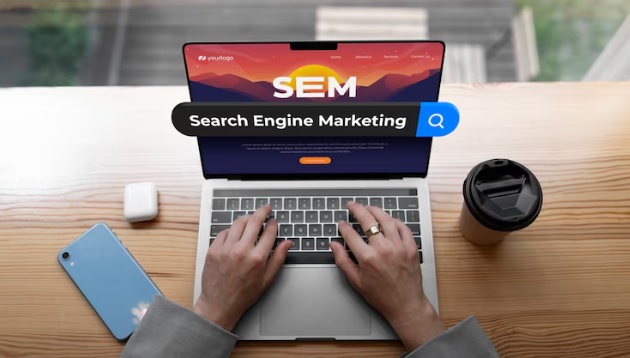
In today’s rapidly evolving digital landscape, businesses must employ a multifaceted approach to enhance their online presence. Combining Search Engine Optimization (SEO) and Search Engine Marketing (SEM) has emerged as a powerful strategy for achieving online growth. By integrating these two methodologies and leveraging professional Search Engine Marketing Services, businesses can maximize visibility, drive traffic, and increase conversions.
Understanding SEO and SEM
SEO involves optimizing a website to improve its organic search engine rankings. This includes on-page elements like content quality, keyword usage, and meta tags, as well as off-page factors such as backlinks and domain authority. The goal is to enhance the site’s relevance and authority, thereby increasing its visibility in search engine results pages (SERPs).
SEM, on the other hand, encompasses paid strategies to increase visibility on search engines. This primarily involves pay-per-click (PPC) advertising, where businesses bid on keywords to display their ads prominently in search results. SEM offers immediate visibility and is particularly effective for targeting specific audiences with tailored messages.
The Synergy of Combining SEO and SEM
Integrating SEO and SEM creates a synergistic effect that can significantly enhance online growth. Here’s how:
1. Comprehensive Keyword Strategy: SEO relies on identifying and targeting relevant keywords to improve organic rankings. SEM provides immediate data on which keywords are driving traffic and conversions. By analyzing SEM performance, businesses can refine their SEO keyword strategy to focus on high-performing terms, leading to more effective optimization efforts.
2. Enhanced Visibility: While SEO efforts improve organic rankings over time, SEM offers instant visibility through paid ads. By occupying both organic and paid positions in SERPs, businesses can dominate the search landscape, increasing the likelihood of attracting clicks from potential customers.
3. Data-Driven Decisions: SEM campaigns provide valuable insights into user behavior, such as click-through rates (CTR), conversion rates, and cost-per-click (CPC). This data can inform SEO strategies, helping businesses understand which keywords and ad copies resonate with their audience, leading to more targeted and effective content creation.
4. Cost Efficiency: While SEM requires ongoing investment, SEO focuses on building long-term organic visibility. By improving SEO rankings for high-cost keywords identified through SEM, businesses can reduce their reliance on paid ads over time, leading to cost savings.
5. Adaptability to Market Changes: The digital market is dynamic, with trends and user behaviors constantly evolving. SEM allows for quick adjustments to campaigns in response to these changes, providing immediate feedback. These insights can be used to adjust SEO strategies, ensuring that both organic and paid efforts remain aligned with current market conditions.
Implementing a Combined SEO and SEM Strategy
To effectively integrate SEO and SEM, consider the following steps:
1. Unified Keyword Research: Conduct comprehensive keyword research to identify terms that are relevant to your business. Use SEM campaigns to test these keywords, analyzing their performance to inform your SEO strategy.
2. Consistent Messaging: Ensure that your messaging is consistent across both SEO and SEM efforts. This includes aligning ad copy with meta descriptions and on-page content to provide a cohesive experience for users.
3. Collaborative Teams: Foster collaboration between your SEO and SEM teams. Regular communication and data sharing can lead to more informed decisions and a unified approach to search marketing.
4. Continuous Monitoring and Optimization: Regularly monitor the performance of both SEO and SEM campaigns. Use analytics tools to track key metrics and make data-driven adjustments to optimize performance continually.
Latest Trends in Search Engine Marketing
Staying abreast of the latest trends in SEM is crucial for maintaining a competitive edge. Some notable developments include:
· Voice Search Optimization: With the increasing use of voice assistants like Amazon’s Alexa, Google Assistant, and Apple’s Siri, optimizing for voice search is becoming essential. This involves focusing on conversational keywords and natural language queries to capture voice search traffic.
· AI and Machine Learning: The integration of artificial intelligence and machine learning in SEM allows for more efficient bid management, ad placement, and audience targeting. AI-powered tools can analyze vast amounts of data to optimize campaigns in real time, enhancing ROI.
· Visual Search Optimization: The rise of visual search, where users search using images instead of text, is transforming SEM strategies. Optimizing images with relevant keywords and metadata can improve visibility in visual search results, attracting a broader audience.
· Featured Snippets and Zero-Click Searches: The growing prevalence of featured snippets and zero-click searches, where users find answers directly on the SERP without clicking through to a website, is influencing SEM tactics. Structuring content to appear in featured snippets can increase visibility and brand authority.
· SEM Tools for Performance Enhancement: Businesses are increasingly using advanced SEM tools like Google Ads, SEMrush, and Ahrefs to refine their paid search campaigns. These tools provide deep insights into keyword performance, competitive analysis, and ad optimization, helping brands stay ahead of the competition.
Conclusion
Combining SEO and SEM offers a powerful approach to online growth. By leveraging the strengths of both strategies, businesses can achieve greater visibility, drive more targeted traffic, and enhance overall marketing effectiveness. Staying informed about the latest trends in search engine marketing services and adapting strategies accordingly will ensure sustained success in the competitive digital landscape.